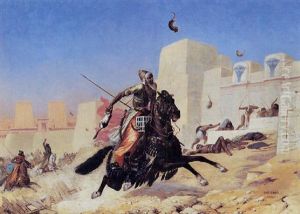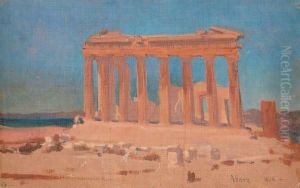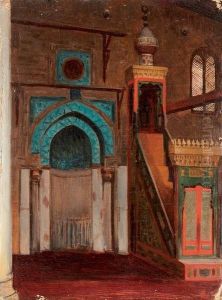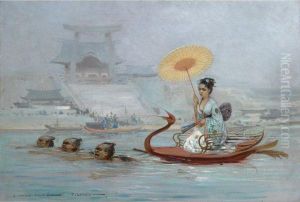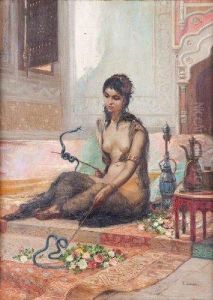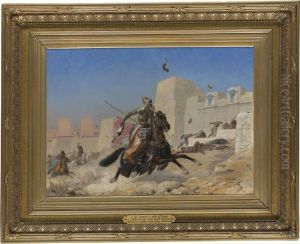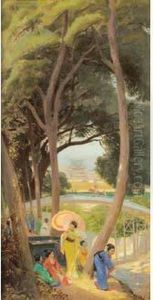Paul-Marie Lenoir Paintings
Paul-Marie Lenoir, born in 1843 and deceased in 1899, was a French artist known for his contributions to painting and sculpture during the 19th century. His work, though not as widely recognized as some of his contemporaries, played a significant role in the artistic movements of his time. Lenoir was born into a period of profound artistic change, where the Romantic movement was giving way to Realism and Impressionism. This era was marked by a shift towards depicting everyday life and the natural world in a more realistic manner.
Lenoir's training and early career were rooted in the traditional academies of France, where he honed his skills in both painting and sculpture. He was deeply influenced by the academic art of the period but was also drawn to the emerging styles that sought to break away from the formal constraints of academic art. Throughout his career, Lenoir navigated between these two worlds, often incorporating elements of realism and impressionism into his work. His subjects varied from historical and mythological scenes to portraits and landscapes, showcasing his versatility as an artist.
Despite his talent, Lenoir struggled to gain the same level of recognition as some of his peers. The art world of the 19th century was highly competitive, and while Lenoir exhibited his work in various salons and exhibitions, he was often overshadowed by more prominent figures. However, his contributions have been reassessed over time, and he is now appreciated for his unique approach to 19th-century art.
Lenoir's work is characterized by a delicate balance between detail and atmosphere, capturing the essence of his subjects with a sensitive touch. His landscapes, in particular, reflect a deep appreciation of nature, rendered with a softness that prefigures some aspects of Impressionism. Meanwhile, his portraits and historical paintings display a keen eye for detail and a commitment to realism.
Paul-Marie Lenoir's legacy is that of an artist who bridged the gap between traditional academic art and the newer, more experimental movements of his time. Though he may not have achieved widespread fame during his lifetime, his work contributes to our understanding of a pivotal period in art history. Lenoir passed away in 1899, leaving behind a body of work that continues to be studied and admired for its beauty and historical value.



